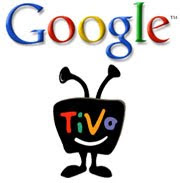A Dell engineer has released a tweaked version of Google's prototype Chrome operating system that runs on the company's Mini 10v netbook. Announced previous this month, Google Chrome OS is a web-centric operating system that's likely to be made available on mini laptops towards the end of 2010. However, Google has previously released the code to the open source community to support developers to write applications for the platform.

Dell engineer 'Dell-Doug A' revealed his preliminary conclusions about Chrome OS on the Direct2Dell blog and has made a report of the software available as a USB key image file. It's intended to work on the Dell Mini 10v, although the Dell engineer admits "it's not perfect."
"It will take more than 5-10 minutes for the network association manager to 'see' the access points and allow you to select and connect - be patient. Use this image at your own risk - it comes to you completely unsupported and very minimally tested," he warns.

However, Dell-Doug A praised Google's netbook operating system: "The browser is exceptionally fast and makes for a great web-centric browsing experience. Boot time appears quick too - about 12 seconds from striking the power button."






















 Each template is made up of 15 to 20 pre-populated pages, including sample content, page layouts, embedded gadget, navigation links, and themes. The templates can be customized, up to a point, using Google Sites' built-in editing tools.
Each template is made up of 15 to 20 pre-populated pages, including sample content, page layouts, embedded gadget, navigation links, and themes. The templates can be customized, up to a point, using Google Sites' built-in editing tools. 

 By contrast, Google's smartly named SPDY protocol can reduce and handle the individual requests through one connection that's SSL-encrypted. That allows higher-priority files to slide through immediately without becoming backed up behind large files.SPDY has revealed up to 55 percent web page loading when tested under lab conditions, and the Google team has published their source code for public feedback.
By contrast, Google's smartly named SPDY protocol can reduce and handle the individual requests through one connection that's SSL-encrypted. That allows higher-priority files to slide through immediately without becoming backed up behind large files.SPDY has revealed up to 55 percent web page loading when tested under lab conditions, and the Google team has published their source code for public feedback.